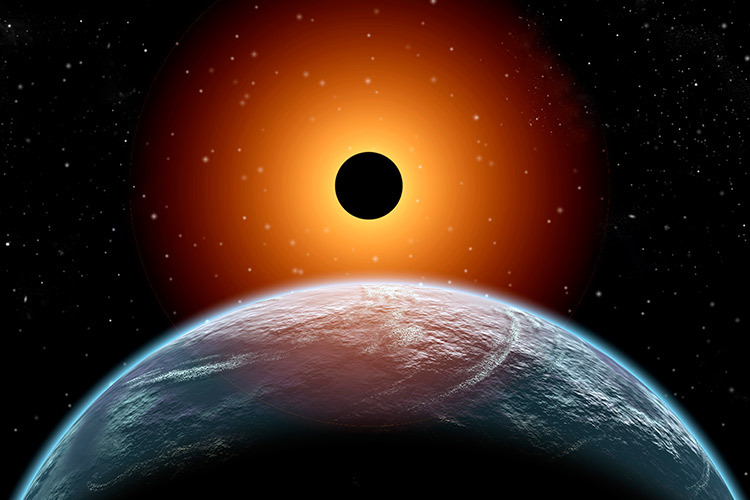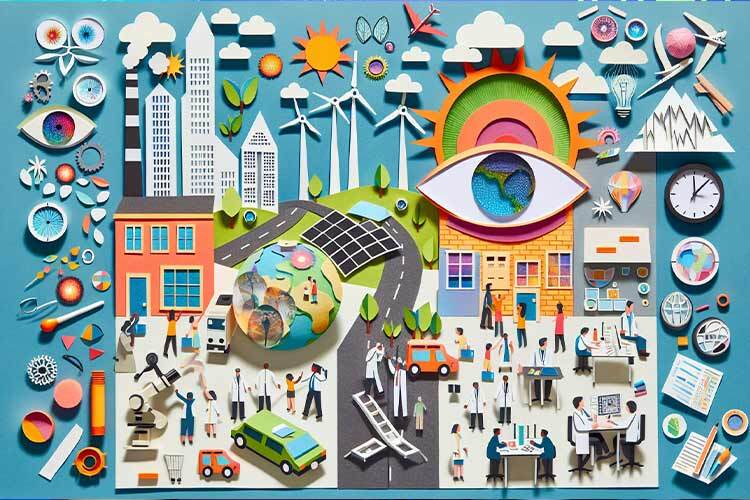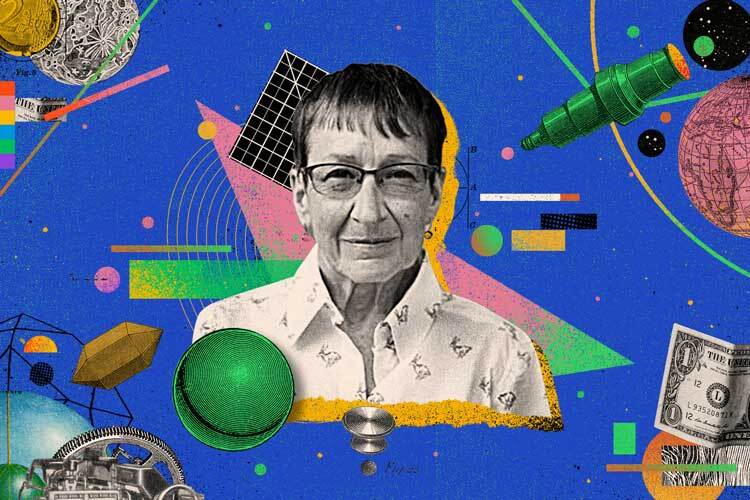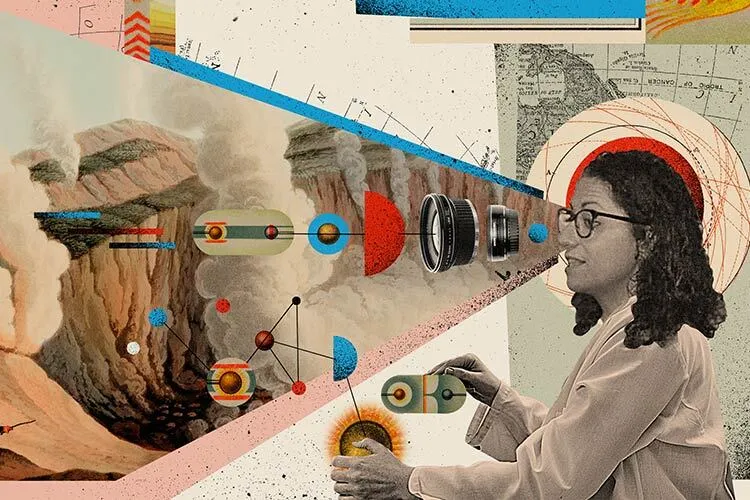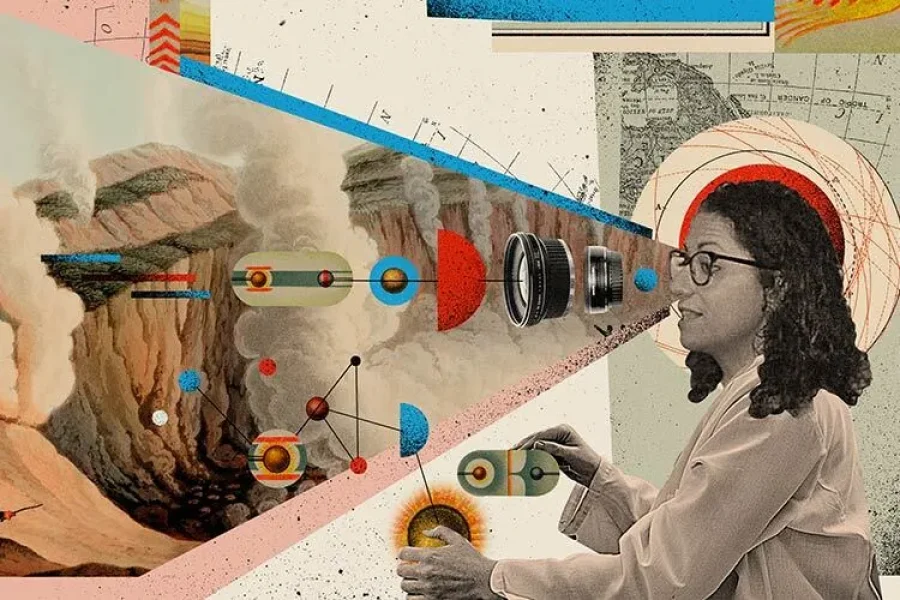Total solar eclipses, like the one that will occur on April 8 and that will be visible from several regions in Mexico, are astronomical events that have contributed to a better scientific understanding of the universe, from the discovery of new elements to the testing of the theory of relativity.
“There are several things that we can learn during eclipses,” says Dr. Carolina Berenice Rodríguez, astrophysicist and director of Industrial Physics at the Tec’s Monterrey campus, to TecScience. Observations made when the Moon covers the Sun “help generate data, models, and make predictions.”
Although it’s very easy to see the Sun, it’s very difficult at the same time. Its light is so bright that it makes it difficult to study, particularly the layer of its atmosphere called the corona. “It’s the outermost part of the Sun’s atmosphere, and it’s very unusual,” says Rodríguez, also known as The Rocket Woman.
Why Do Total Eclipses Help Us Study The Sun?
The corona is dimmer than the rest of the star, which makes it very difficult to observe under intense sunlight. But during total eclipses, when the Moon covers the Sun, the corona can be seen and studied.
The solar corona is a halo of plasma surrounding the Sun that is up to 450 times hotter than the Sun’s surface. Its particles are super-heated, which causes the corona to extend millions of kilometers into space, becoming solar wind. This consists of the continuous flow of particles that reach planets in the Solar System all the time, including Earth, where they interact with our atmosphere.
There, it can impact telecommunications systems and satellites, especially if the solar wind arrives as a mass ejection, which is the projection of many particles in a short period of time. “Our modern-day life depends entirely on telecommunications,” says the astrophysicist, so it’s very important to understand the phenomena affecting them.
Coronagraphs have existed for almost 100 years. These instruments are attached to telescopes to block light coming directly from the Sun to somewhat simulate an eclipse, which allows the corona to be studied. However, “During an eclipse, you can see the innermost parts of the corona that are closest to the solar disk,” something that chronographs can’t completely achieve.
To this day the corona remains a mystery. For example, it is unclear why it is hotter than the Sun’s surface, or why it can continuously produce solar wind. These types of questions continue to be explored with each total solar eclipse.
Vista del #eclipsesolar total de 2024
— TecScience (@TecScience_) April 8, 2024
En este tipo de eclipses la Luna tapa la luz del Sol, proyectando una sombra sobre la Tierra que por algunos minutos produce total oscuridad durante el día. No son eventos que puedan observarse muy seguido; el próximo será hasta 2052… pic.twitter.com/O94To0FsNA
An Eclipse Gave The First Proof Of The Theory Of Relativity
In 1915, Albert Einstein published his theory of general relativity, turning all physics and the understanding of the universe upside down. In this theory, the scientist proposes that space-time is curved with the mass and energy of very large objects, which is precisely the distortion that produces the force of gravity.
It’s as if space-time were a fabric under tension. If heavy balls are placed on this surface, they curve the fabric and create wells. Smaller objects rolling around on the fabric, such as marbles, would change their direction as they passed near these depressions. This is a very different explanation of the attraction between bodies than the one that existed until that time, Newton’s theory of gravity.
Einstein’s calculations and reasoning were quite convincing, but there was one problem: verifying the theory empirically with direct evidence. One way that occurred to the physicist to obtain evidence was to measure the apparent positions of the stars during the day and night, i.e., the position where they’re seen in the sky, from the same point on Earth.
According to his theory, the Sun would be like the ball that distorts the space-time fabric. Anything passing near it, such as light particles, would have curved paths. Since the Sun is closer to us during the day, the light coming from the stars (which tells us their apparent position) would be a little more curved than during the night, and their position would be slightly different.
The problem is that the light from the stars isn’t visible during the day since the Sun obscures it. Unless there is a total eclipse. This eclipse arrived in 1919 and “It was what made Einstein famous,” says Carolina Rodríguez.
In 1919, during a total solar eclipse visible from Brazil and Príncipe Island in Africa, the first empirical evidence for the theory of general relativity was collected. Two astrophysicists, Arthur Eddington and Frank Dyson, took very precise measurements of the position of a group of stars during the eclipse, and afterwards, in exactly the same place, at night.
“They found that there was a difference; the stars seemed as if they were displaced from their actual position.” Calculations of the difference between the position during the day and at night turned out to be precisely as the theory of general relativity had predicted.
In 1922 there was another eclipse that also contributed to corroborating this theory, as well as several more up until 1973, when other types of technology began to be used, such as radio telescopes, to measure the light distortion of stars and other objects. Today, the theory of general relativity has a lot of evidence from various sources.
How Helium Was Discovered
Helium is the second most abundant element in the universe, and the only one whose discovery was made outside our planet. In 1868, astronomer Joseph Norman Lockyer was, like many scientists of his time, marveling at a new technique called spectroscopy.
This consists of passing light through some device, such as a prism, to “split” it into the spectrums or different wavelengths it consists of. These wavelengths provide information about the elements of which the light source is composed, since each of them has a specific color.
During an eclipse, Lockyer observed a yellow line in the light from the sun through a spectroscope made by Jules Janssen. No known element at that time gave that color. He deduced therefore that it would have to be a new element, which he named Helium, after the Greek word Helios meaning sun.
It wasn’t until 1895 that Helium was discovered on Earth, confirming that it produced the same spectrum as that of the Sun.
